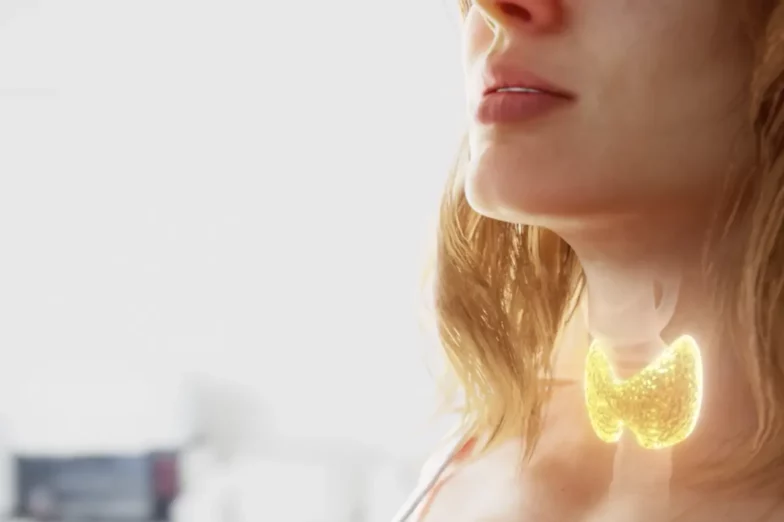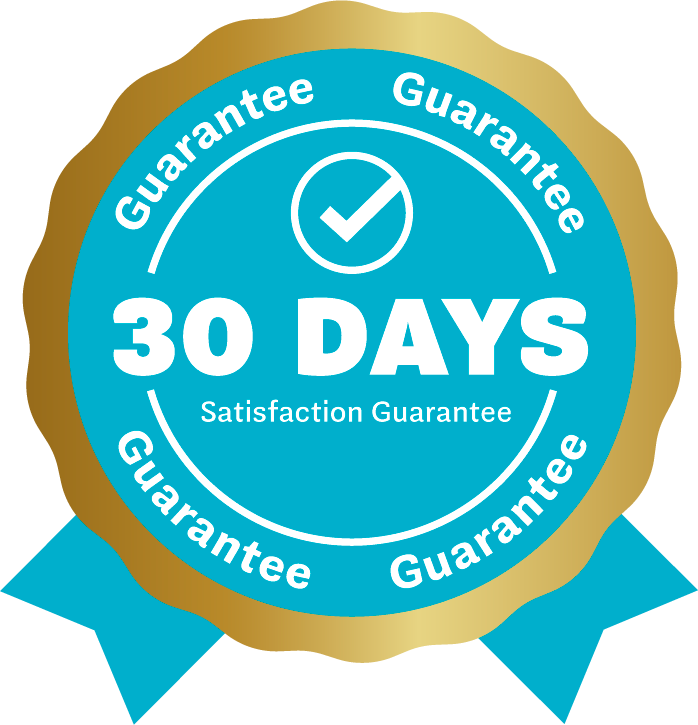I have long researched and written about the value of photobiomodulation (PBM), but it wasn’t until recently that I could try it myself, and I am hooked! And I hook up daily!
I keep a busy schedule and want to be at the top of my mental game. I love eating great food, herbs, spices and taking supplements, but there is a limit to that, and I want other interventions to optimize my game. Photobiomodulation (PBM for short) is a low-level laser application to the brain. I have been using this particular type, and it also has direct access to the brain through an intra-nasal device.
I burn up a lot of brain energy and was already devoting plenty of time daily to self-care. I wanted something passive, an intervention that made it easy to comply. Staying cognitively on my toes means feeding those mitochondria and keeping them happy, and this is a superior method that complements my high-intensity aerobics and nutritional supports like ubiquinone, PQQ, and NAD+.
I had seen VieLight at conferences over the years and had taught about this technology and the research behind it. Since I believe in trying everything I teach before I recommend to my clients, it was time to test it. Are you curious about this relatively new brain health intervention with lots of solid science behind it?
Did Photobiomodulation benefit me?
I decided to work with the neuro-gamma waves as part of the VieLight series. I felt I had plenty of relaxation methods like exercise and meditation for my alpha waves, but gamma is defined for cognitive function. Since I have Alzheimer’s in my family tree, I do everything possible to prevent brain decline. VieLight machines offer alpha waves and alpha and gamma combined, and I have recommended these to clients who will also benefit from deep relaxation.
I have used the Vielight device daily for 3 months, and it’s become a healthy habit that I look forward to. In fact, I have to stop myself from using it for more than 20 minutes daily as prescribed. The literature suggests it takes at least six weeks to notice results. I notice many significant changes already. I am thinking more clearly and have even more brain energy for complex tasks. Even though I shouldn’t be multitasking, I do and find I have much more stamina. There are subtle changes as well. Word and name recall which starts to slow down has been sharper, and frankly (well, I will let my students be the judge of this), I feel more scintillating than ever in my lectures where words flow easily.
Interested? I have arranged with Vielight to provide my clients and students with a 10% discount on all device purchases. Use code KORN at checkout.
What is Photobiomodulation?
Now let’s dive into the science behind photobiomodulation, also known as low-level laser therapy or cold laser with near-infrared light therapy. The transcranial application of non-ionizing electromagnetic energy triggers changes within the mitochondria, leading to increased production of ATP, the energy source of metabolism. It primarily targets cytochrome-C-oxidase, which releases reactive oxygen species (ROS) and regulates cellular signaling pathways. Mitochondria is particularly receptive to red and near-infrared (NIR) photons.
Photobiomodulation, Mitochondria, and Mental Health
My work in integrative medicine and nutrition for mental health focuses on PTSD, complex trauma, traumatic brain injury, and all the attendant effects like anxiety, depression, and fatigue. We target many brain systems for recovery, including mitochondria, our little “engines that could,” and I am always interested in developing methods that enhance these “mighty mitos”.
Increasingly, mitochondrial dysfunction is implicated in both mental health and physical health.
Enhancing mitochondrial function is a primary therapeutic target for PTSD, complex trauma, and TBI biology. This cellular process also enhances nitric oxide production and release leading to blood vessel dilation and improved blood circulation.
At the cellular level, visible red and near-infrared light energy is absorbed by mitochondria, positively affecting mitochondrial respiration, and producing cellular energy called “ATP.” The key to this process is cytochrome oxidase c, a chromophore, a “mito enzyme: which accepts photonic energy of specific wavelengths when it is not optimal. PBM appears to penetrate into the cerebral cortex and increase cerebral blood flow.
Animal and human studies using various t-PBM settings and experimental models suggest that t-PBM may have significant efficacy and good tolerability in MDD. Remember from my talks that I emphasize the research showing the many psychotropic medications, like SSRIs and antipsychotics, actually suppress mitochondrial respiration, leading to what I call the Sisyphus effect whereby to climb the hill out of depression (or mental distress) the medications add “boulders” of side effects that make it that much harder.
Photobiomodulation for PTSD, Sleep, and Depression
Research on PBM with people with TBI, PTSD (Lamartiniere et al., 2019), anxiety, and sleep disorders showed improvements following treatment (Maiello et al., 2019) with a medium to large effect in major depressive disorder (Caldieraro & Cassano, 2019; Cassano et al., 2018). One animal study found that PBM treatment applied immediately after a traumatic event prevents the development of PTSD-like fear (Li et al., 2021).
Our field of Integrative Medicine and Nutrition for Mental health has wide applications.
Photobiomodulation for Mood
Research reviews have looked at PMB’s effect on mood, especially major depression, and found strong recommendations in support of its application for moderate MDD (Montazeri, 2022)
Photobiomodulation for people on the Autism Spectrum
One small research study (Palanti et al. 2022) showed that after 6 months, transcranial-intranasal brain PBM was associated with:
- reduction in ASD severity
- reduction in noncompliant behavior
- reduction in parental stress
- reduction in behavioral and cognitive rigidity
- improvement in attentional functions and in sleep quality.
Photobiomodulation for Parkinson’s
One study found significant improvement in Parkinson’s using measures of mobility, cognition, dynamic balance, and fine motor skills with PBM treatment for 12 weeks and up to one year (Liebert et al., 2021), and this has led to several new clinical studies for PMB and its application for Parkinson’s
What Are the Side Effects of Photobiomodulation?
PBM is well tolerated and has no serious side events. Research and clinical application are still nascent yet promising. The combination of a personalized approach to each client that delivers nourishment to the mitochondria through specific dietary nutrients, botanicals, light and high-intensity exercise enhances treatment outcomes.
Are you intrigued by PMB? So was I, and it takes a lot to get my interest in the plethora of options we have to choose from for ourselves and our client’s well-being.
So the next time someone says to you:
“lighten up!”
You can tell them, “I am!”
Let me know your thoughts. I always love hearing from you
Disclosure
I have arranged with Vielight to provide my clients and students with a 10% discount on all purchases. For each purchase Vielight also makes a donation to my nonprofit 501(c)(3) Nutrients for Natives pro bono health program. To learn more, visit my Health Store.
References
Caldieraro, M. A., & Cassano, P. (2019). Transcranial and systemic photobiomodulation for major depressive disorder: A systematic review of efficacy, tolerability and biological mechanisms. Journal of Affective Disorders, 243, 262–273. https://doi.org/10.1016/j.jad.2018.09.048
Cassano, P., Petrie, S. R., Mischoulon, D., Cusin, C., Katnani, H., Yeung, A., De Taboada, L., Archibald, A., Bui, E., Baer, L., Chang, T., Chen, J., Pedrelli, P., Fisher, L., Farabaugh, A., Hamblin, M. R., Alpert, J. E., Fava, M., & Iosifescu, D. V. (2018). Transcranial photobiomodulation for the treatment of major depressive disorder. The ELATED-2 Pilot Trial. Photomedicine and Laser Surgery, 36(12), 634–646. https://doi.org/10.1089/pho.2018.4490
Lamartiniere, R., Bergeron, R., Aung-Din, R., Bennett, M., Stephan, W., & Banas, L. (2019). Photobiomodulation treatment for brain disorders: Posttraumatic stress disorder (PTSD) and dementia. In M. R. Hamblin and Y.-Y. Huang (Eds.), Photobiomodulation in the brain: Low-level laser (light) therapy in neurology and neuroscience (pp. 589–597). Academic Press. https://doi.org/10.1016/B978-0-12-815305-5.00042-7
Liebert, A., Bicknell, B., Laakso, E. L., Heller, G., Jalilitabaei, P., Tilley, S., Mitrofanis, J., & Kiat, H. (2021). Improvements in clinical signs of Parkinson’s disease using photobiomodulation: a prospective proof-of-concept study. BMC neurology, 21(1), 256. https://doi.org/10.1186/s12883-021-02248-y
Li, Y., Dong, Y., Yang, L., Tucker, L., Zong, X., Brann, D., Hamblin, M. R., Vazdarjanova, A., & Zhang, Q. (2021). Photobiomodulation prevents PTSD-like memory impairments in rats. Molecular Psychiatry, 26(11), 6666–6679. https://doi.org/10.1038/s41380-021-01088-z
Maiello, M., Losiewicz, O. M., Bui, E., Spera, V., Hamblin, M. R., Marques, L., & Cassano, P. (2019). Transcranial photobiomodulation with nearinfrared light for generalized anxiety disorder: A pilot study. Photobiomodulation, Photomedicine, and Laser Surgery, 37(10), 644–650. https://doi.org/10.1089/photob.2019.4677
Montazeri, K., Farhadi, M., Fekrazad, R., Chaibakhsh, S., & Mahmoudian, S. (2022). Photobiomodulation therapy in mood disorders: a systematic review. Lasers in medical science, 37(9), 3343–3351. https://doi.org/10.1007/s10103-022-03641-w
Pallanti, S., Di Ponzio, M., Grassi, E., Vannini, G., & Cauli, G. (2022). Transcranial Photobiomodulation for the Treatment of Children with Autism Spectrum Disorder (ASD): A Retrospective Study. Children (Basel, Switzerland), 9(5), 755. https://doi.org/10.3390/children9050755
- Touch Therapy for Trauma Recovery - April 19, 2024
- The Soul of Basil - March 12, 2024
- A Comprehensive Guide to Natural Hypothyroidism Treatment - November 17, 2023

Are You Ready to Advance Your Career?
If you want to advance your career in integrative medicine, explore my courses and certifications.















